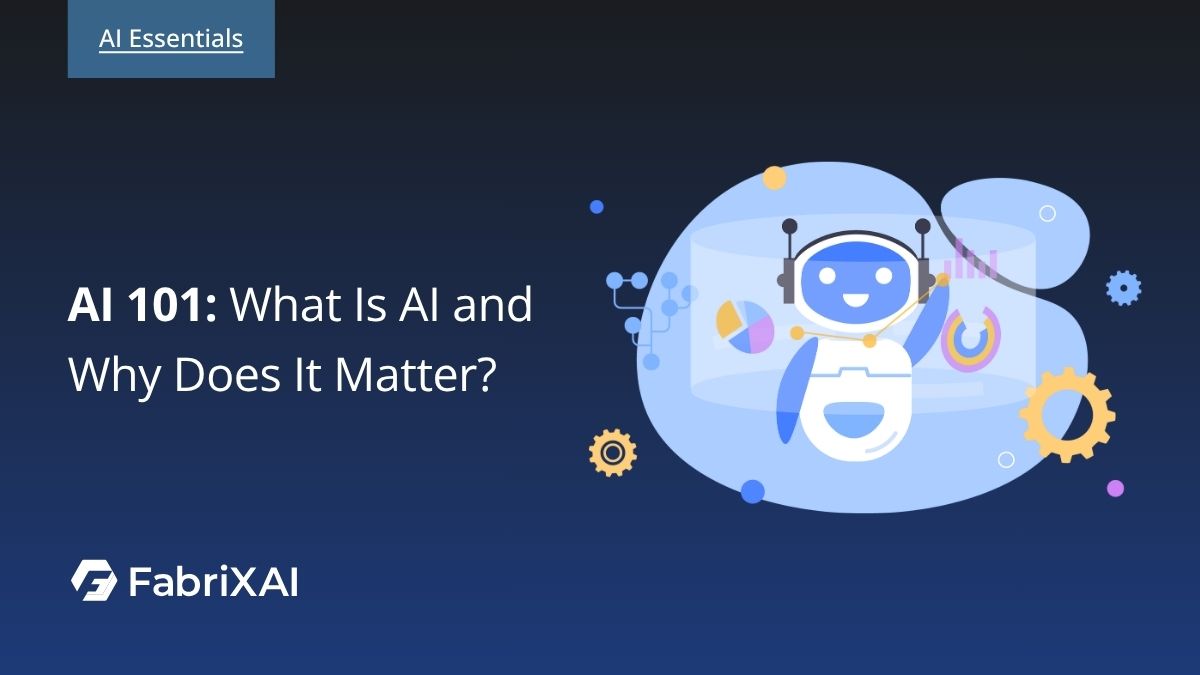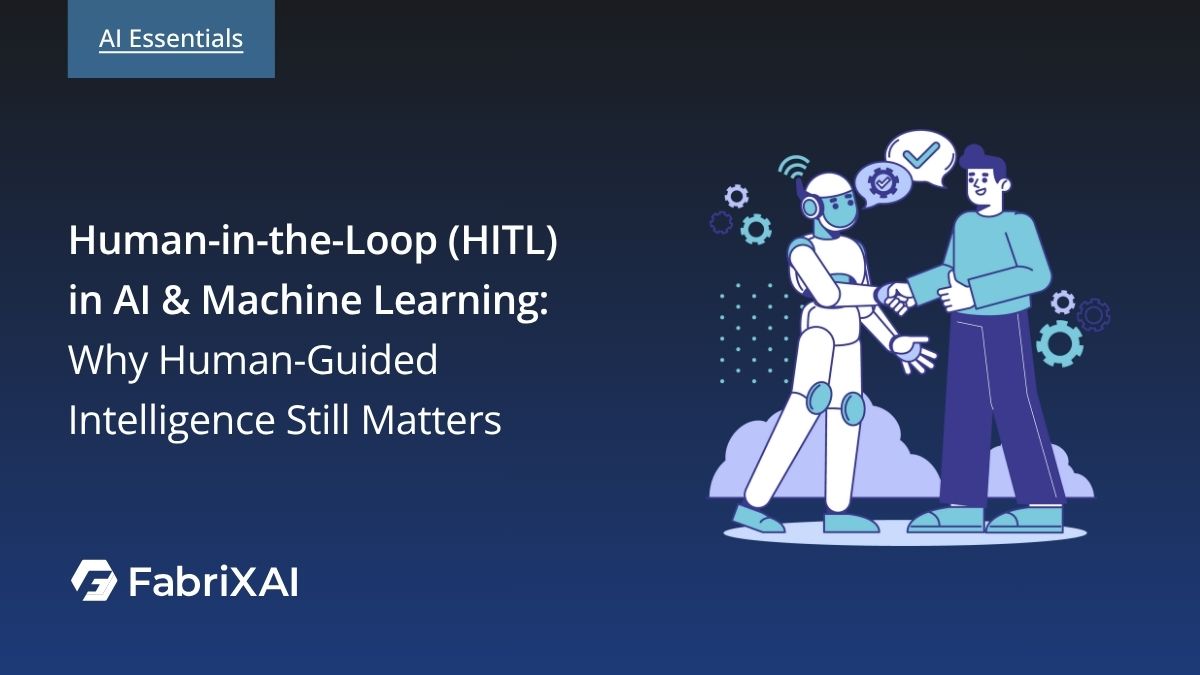AI 101: What Is AI and Why Does It Matter?

Artificial Intelligence, or AI, is reshaping how we live, work, and connect. You’ve probably interacted with it already: when Netflix recommends a show, your phone unlocks with your face, or a chatbot helps you track a delivery. But what is AI, really? And why is it so important for businesses, schools, hospitals, and even NGOs?
This post will give you a clear, easy-to-understand introduction to AI: what it is, how it works, and why it matters to everyone.
What Is Artificial Intelligence?
Simply put, Artificial Intelligence (AI) is when machines or software perform tasks that usually require human intelligence, such as understanding language, recognizing images, making decisions, or learning from experience.
Think of AI as a smart assistant that can analyze data, learn from it, and make predictions or decisions without constant human direction. It’s not magic or science fiction, it’s smart programming and massive amounts of data working together.
Here are some common examples:
- Virtual assistants like Siri, Alexa, or Google Assistant
- Recommendation engines on YouTube, Netflix, or Spotify
- Chatbots that answer customer service questions
- Autopilot features in cars or navigation systems
In technical terms, most modern AI uses something called machine learning, where computers “learn” by analyzing examples instead of being told exactly what to do. For instance, you can teach an AI to recognize cats by showing it thousands of cat pictures until it figures out the patterns including whiskers, ears, shape. etc. that define a cat.
Types of AI
AI comes in many forms, including:
- Machine Learning (ML): Systems that learn patterns from data (e.g., predicting who might need social assistance next).
- Natural Language Processing (NLP): Technology that understands and generates human language (like chatbots and translation tools).
- Computer Vision: Systems that “see” and analyze images or videos (used in facial recognition or health diagnostics).
- Predictive Analytics: Tools that forecast future outcomes based on past data (for example, identifying risk factors in vulnerable populations).
How Does AI Work?
AI works by analyzing patterns in data, just like how humans learn from experience.
Here’s a simple way to imagine it:
- Input: You give AI data, for example, pictures of cats and dogs.
- Learning: AI studies the data to find patterns (cats often have pointy ears, dogs have snouts).
- Prediction: When shown a new image, AI uses what it learned to guess whether it’s a cat or a dog.
- Feedback: If it’s wrong, the system adjusts and gets better over time.
This process, learning from data and improving automatically, is the foundation of AI. It’s why your phone’s voice recognition gets better the more you use it.
In short: AI learns from data, identifies patterns, and makes decisions faster than humans could.
Why Does AI Matter?
AI isn’t just a tech trend, it’s transforming how we solve problems and serve people. Here’s why it’s important:
1. Boosts Efficiency
AI automates repetitive tasks, from scheduling meetings to sorting thousands of records, freeing people to focus on creative or meaningful work.
2. Improves Decision-Making
AI analyzes massive amounts of data quickly to help organizations make smarter decisions, whether it’s predicting sales trends or identifying which community needs more aid.
3. Available 24/7
AI systems don’t need breaks. Chatbots and digital assistants can provide support any time, ensuring help is always available.
4. Reduces Errors
Properly trained AI can perform data-heavy or precision tasks more accurately than humans, like detecting small tumors in medical scans or reconciling financial records.
5. Personalizes Experiences
AI helps businesses and educators tailor services to individuals, recommending learning material to a struggling student or suggesting a product based on past preferences.
6. Drives Innovation
AI is helping discover new drugs, optimize energy use, and even create art or music, pushing human creativity and science forward.
How AI Helps Different Sectors
Let’s look at some real-world examples across key sectors: business, social services, nonprofits, education, and healthcare.
1. AI for Businesses
AI is revolutionizing how companies operate, making them more productive, data-driven, and customer-focused.
Smarter Operations
AI automates tasks like invoice processing, inventory tracking, and scheduling, saving time and reducing errors.
Data Insights
Businesses use AI tools to analyze customer data and predict trends, for instance, which products are likely to sell next season.
Better Customer Service
AI chatbots handle basic queries instantly, improving response times and freeing human agents to solve complex issues.
Personalized Marketing
AI systems recommend products or services based on individual behavior, boosting sales and customer loyalty.
Cost Savings
By cutting down on repetitive work and reducing human error, AI helps businesses operate more efficiently and save money.
In short: AI helps businesses work smarter, serve customers better, and innovate faster.
2. AI for Social Services and NGOs
In the nonprofit and public sectors, AI helps staff do more with limited resources, improving both efficiency and care quality.
Supporting Staff
Social workers and case managers spend hours on paperwork. AI can summarize meeting notes, fill forms, and update records, letting workers spend more time with clients.
Example: In Wales, a council uses AI to transcribe and summarize case meetings. Staff now spend more time helping residents and less time typing reports.
Faster Help for Clients
AI-powered chatbots can guide people through applying for benefits, finding shelters, or accessing medical help, available 24/7 and in multiple languages.
Example: In Buenos Aires, the “Boti” chatbot handles 2 million monthly queries, cutting workloads by 50% and speeding up public services.
Data for Better Outcomes
AI helps nonprofits analyze large datasets, to identify needs, track impact, and allocate resources effectively.
Example: NGOs use AI to predict where food aid or medical supplies are needed most, preventing shortages and saving lives.
Accessibility and Scale
AI-powered tools can reach far more people than human teams alone, for instance, an SMS chatbot offering prenatal advice to mothers in rural Africa.
Personalization
AI can flag individuals at risk, like a student who’s stopped attending classes or a client showing signs of crisis, allowing early intervention.
The impact: Staff gain time, service users get faster and fairer support, and organizations expand their reach without adding costs.
3. AI in Education
AI is transforming how teachers teach and students learn.
Personalized Learning
AI tools adapt to each student’s pace and ability, offering extra practice when needed or skipping ahead when concepts are mastered.
Time Savings for Teachers
Automated grading and performance tracking let teachers focus on mentoring rather than paperwork.
Accessibility
Students in remote areas or with disabilities can learn through AI-driven tutoring apps that provide guidance and feedback anytime.
Example: AI-powered learning platforms like Duolingo or Khan Academy use adaptive technology to personalize lessons, making education more engaging and inclusive.
4. AI in Healthcare
Healthcare professionals use AI to diagnose faster, treat better, and manage resources more efficiently.
Early Diagnosis
AI systems detect patterns in X-rays or lab results that humans might miss — identifying diseases earlier and improving survival rates.
Predictive Care
AI analyzes medical records to predict which patients may develop certain conditions, enabling preventive care.
Administrative Help
AI tools automate tasks like scheduling, transcribing doctor notes, and billing — reducing burnout among staff.
Patient Support
AI chatbots answer health questions, send medication reminders, and guide patients through recovery.
Example: In East Africa, a nonprofit uses AI SMS tools to advise expectant mothers — reaching millions who lack direct access to doctors.
In essence: AI in healthcare helps professionals save time, make accurate diagnoses, and deliver better care to more people.
Bringing It All Together
AI’s value lies in its ability to complement humans, not replace them. Whether it’s:
- A teacher personalizing lessons for every student
- A doctor diagnosing faster with AI’s help
- A nonprofit reaching more people with fewer resources
AI acts as a co-pilot, handling repetitive work and providing insights, while humans focus on empathy, creativity, and complex decisions.
Conclusion: How to Start Exploring AI
You don’t need to be a programmer to understand or use AI. Many AI tools today are easy, affordable, and built for everyday use, from smart assistants in your phone to low-code data tools for small teams.
Here’s how you can start:
- Learn the basics: Explore beginner-friendly courses or blogs on AI 101.
- Try AI tools: Use free or low-cost tools like ChatGPT, Google Bard, or Notion AI to see how they can help you.
- Think practically: Ask, “What’s one repetitive task I could automate with AI?”
- Stay curious: AI is evolving fast, keep learning and experimenting.
AI is not just about technology, it’s about enhancing human potential. Whether in business, education, healthcare, or social impact, AI helps us work smarter, serve better, and reach farther. Understanding the basics today means you’ll be ready for the opportunities tomorrow.
Frequently Asked Questions
Q1. What is AI in simple terms?
AI (Artificial Intelligence) is software that learns from data to perform tasks that usually need human intelligence, like understanding language, recognizing images, or making recommendations. Think of it as a smart assistant that spots patterns and helps you decide faster.
Q2. How does AI work?
Instead of following rigid, hand-written rules, AI “learns” from examples. Feed it lots of data (like past emails, images, or transactions), it finds patterns, and then uses those patterns to make predictions, improving as it gets more feedback.
Q3. Why does AI matter for businesses?
AI automates repetitive work, reduces errors, and turns large datasets into clear insights. That means faster customer service (chatbots), better decisions (analytics), cost savings (process automation), and more personalized marketing, helping teams do more with less.
Q4. How can AI help social services and NGOs?
AI lightens admin tasks (summaries, forms, triage), offers 24/7 support via chatbots, and surfaces who needs help most through data insights. Staff get more time for people, and service users get quicker, fairer, more accessible support at scale.
Q5. Is AI safe and fair? How do we start responsibly?
Use high-quality data, add human oversight, and audit results for bias. Start small (e.g., a chatbot or document summarizer), measure outcomes, protect privacy, and create clear guidelines. Aim for “AI as a co-pilot”, not a replacement.

